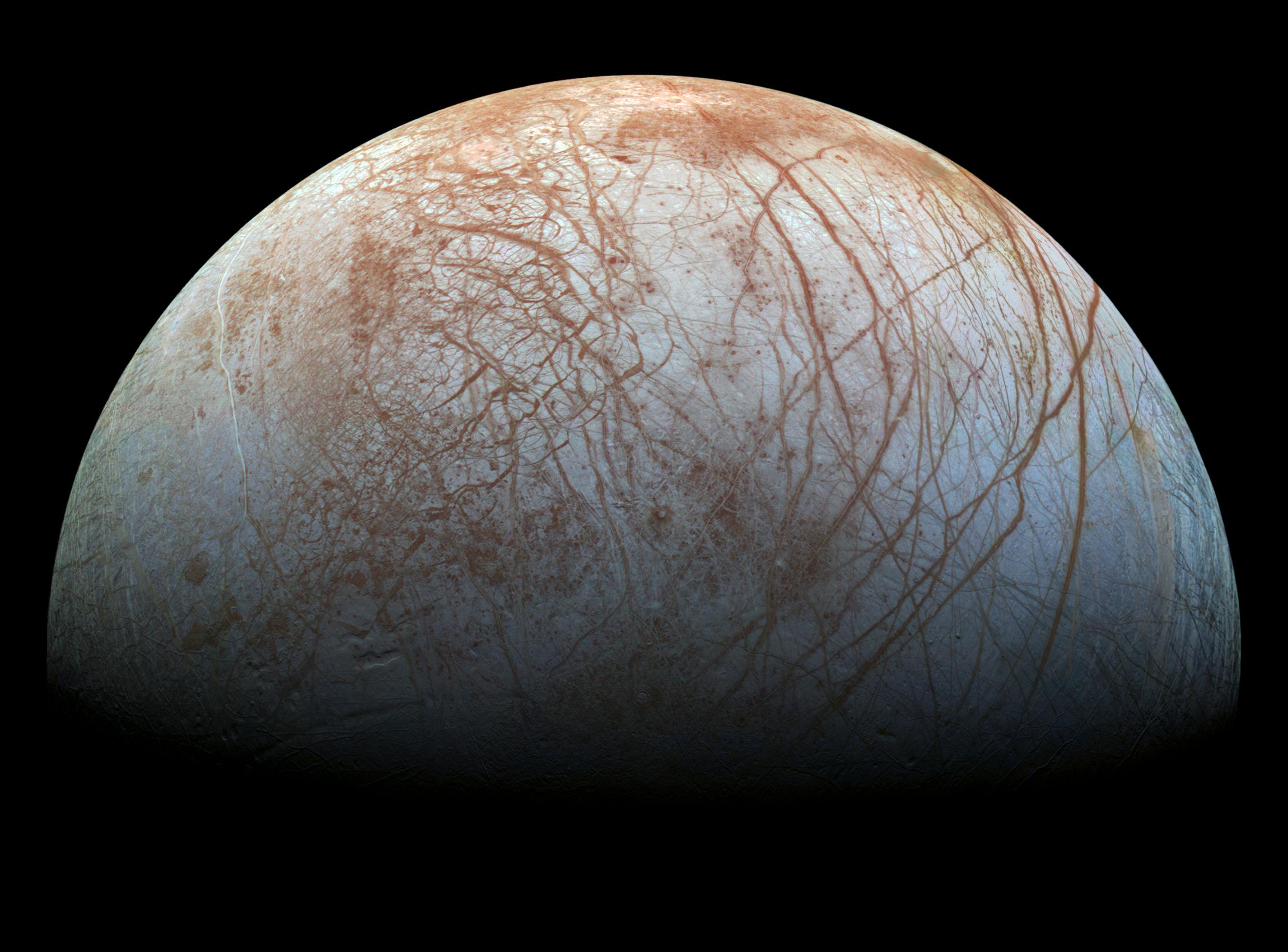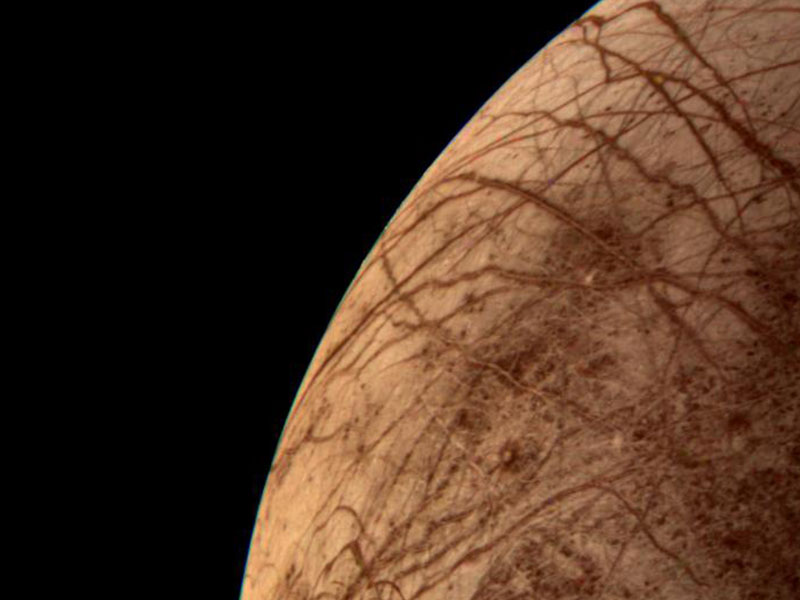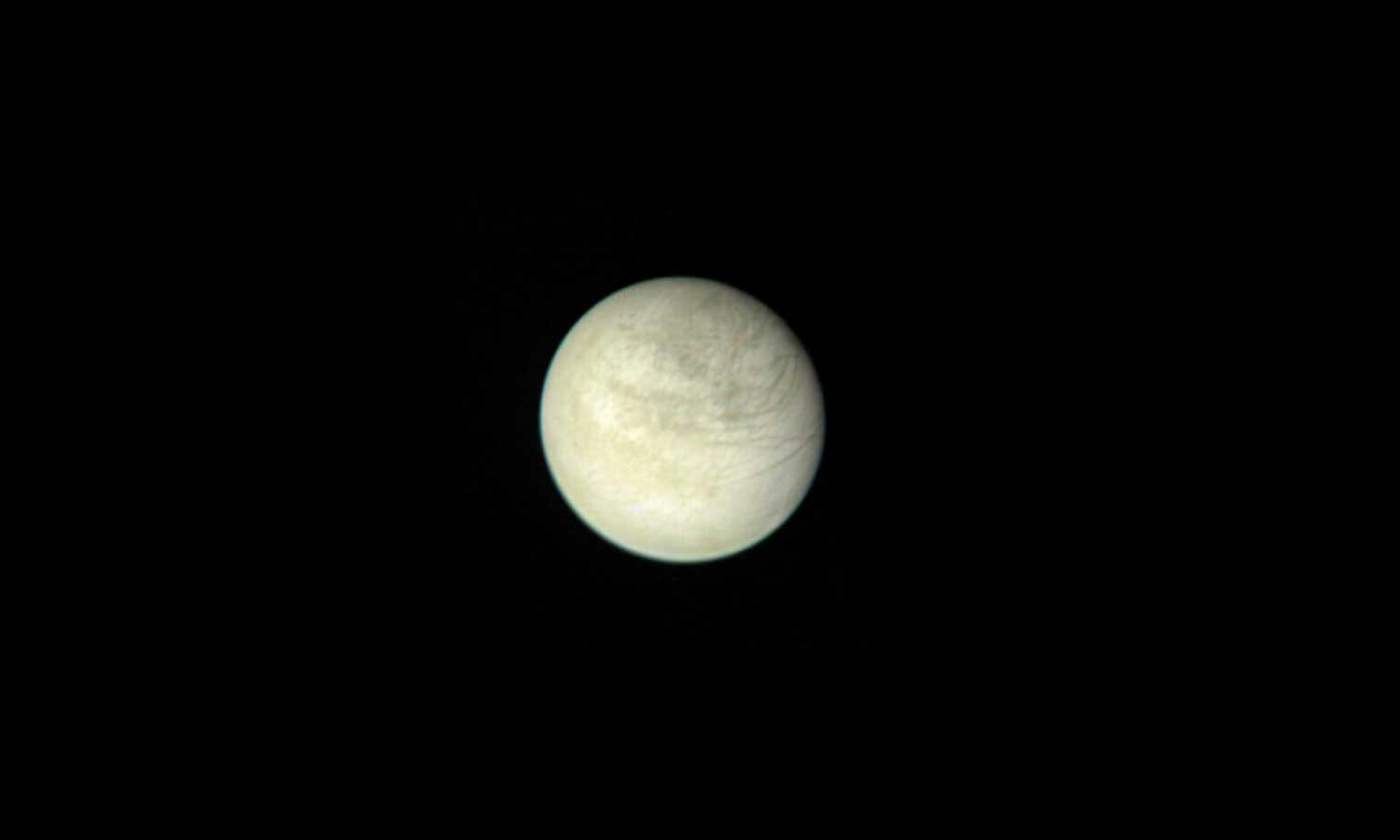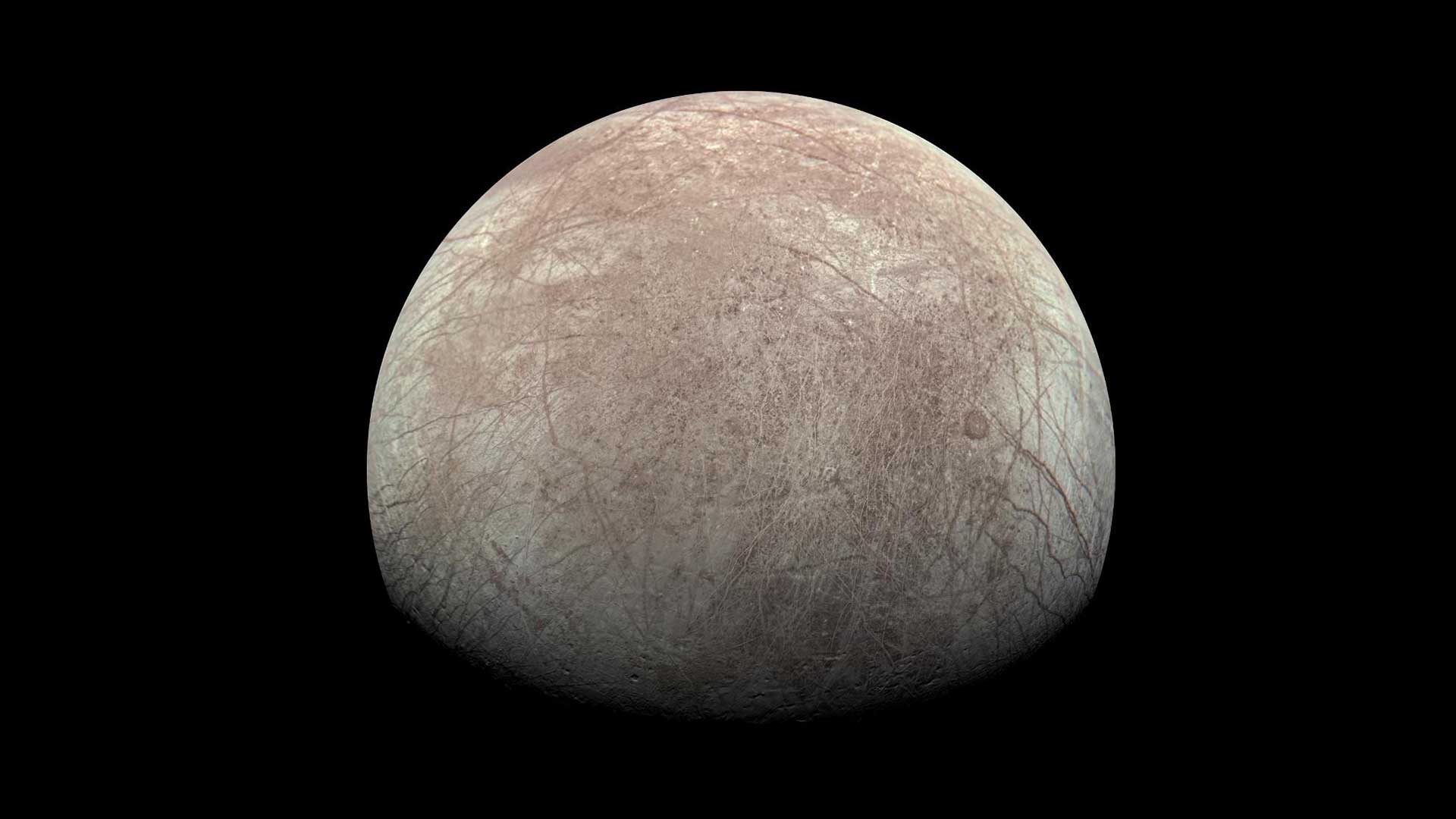


Europa Exploration
Six robotic spacecraft have explored Europa, and scientists do regular checkups on the moon with the powerful Hubble Space Telescope.
In Orbit
Juno
future mission
Europa Clipper
en route
ESA's JUICE Mission
PAST MISSIONS
5

This view of Jupiter's icy moon Europa was captured by JunoCam on NASA's Juno spacecraft during the mission's close flyby on Sept. 29, 2022. The picture is a composite of JunoCam's second, third, and fourth images taken during the flyby, as seen from the perspective of the fourth image. North is to the left.
NASA/JPL-Caltech/SwRI/MSSS with image processing by Kevin M. Gill CC BY 3.0
Europa was one of the first moons found beyond Earth, and it's discovery played a crucial role in understanding how our solar system works. Six spacecraft have visited Europa up close, and more missions are planned.
- Europa was first observed up close during the Jupiter flybys of Pioneer 10, Pioneer 11, Voyager 1 and Voyager 2.
- Most of what we know about Europa comes from several years of orbital observations by the Galileo mission.
- NASA's Juno spacecraft is orbiting Jupiter, and has made close flybys of Europa.
- ESA (European Space Agency) has launched a mission called JUICE (JUpiter ICy moons Explorer).
- NASA is launching Europa Clipper on Oct. 10, 2024.
Keep Exploring




